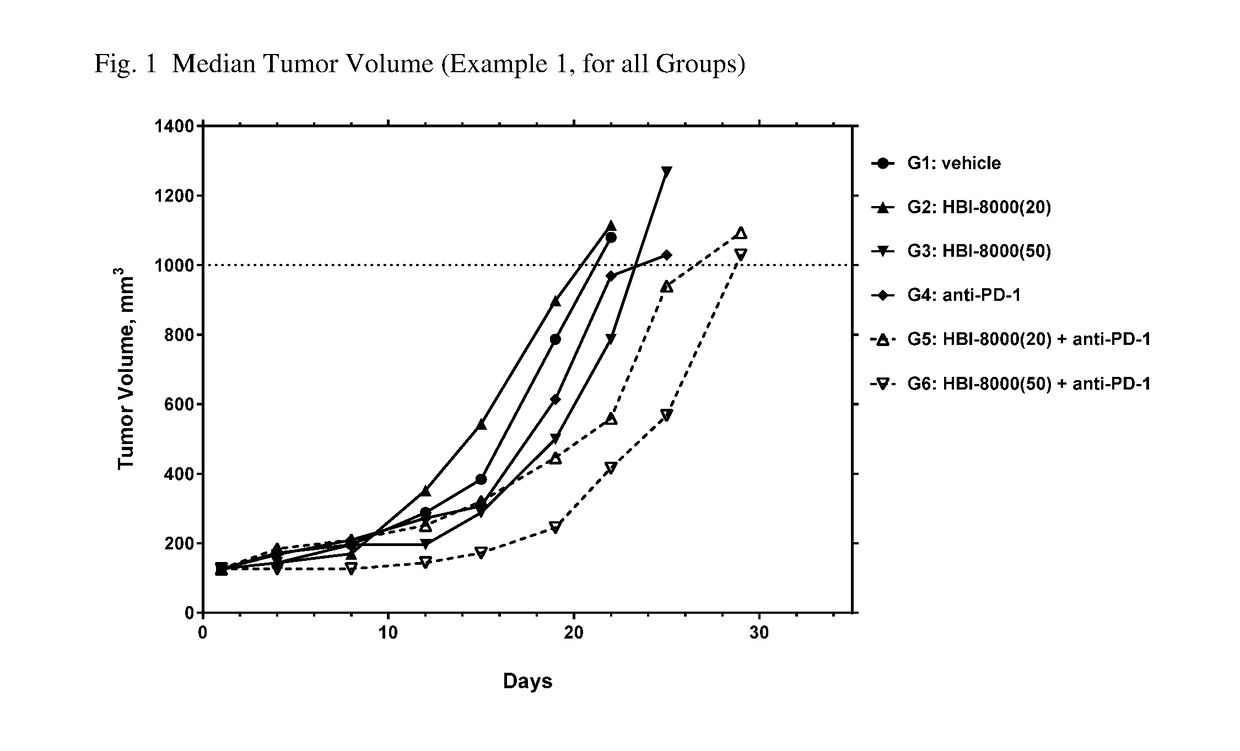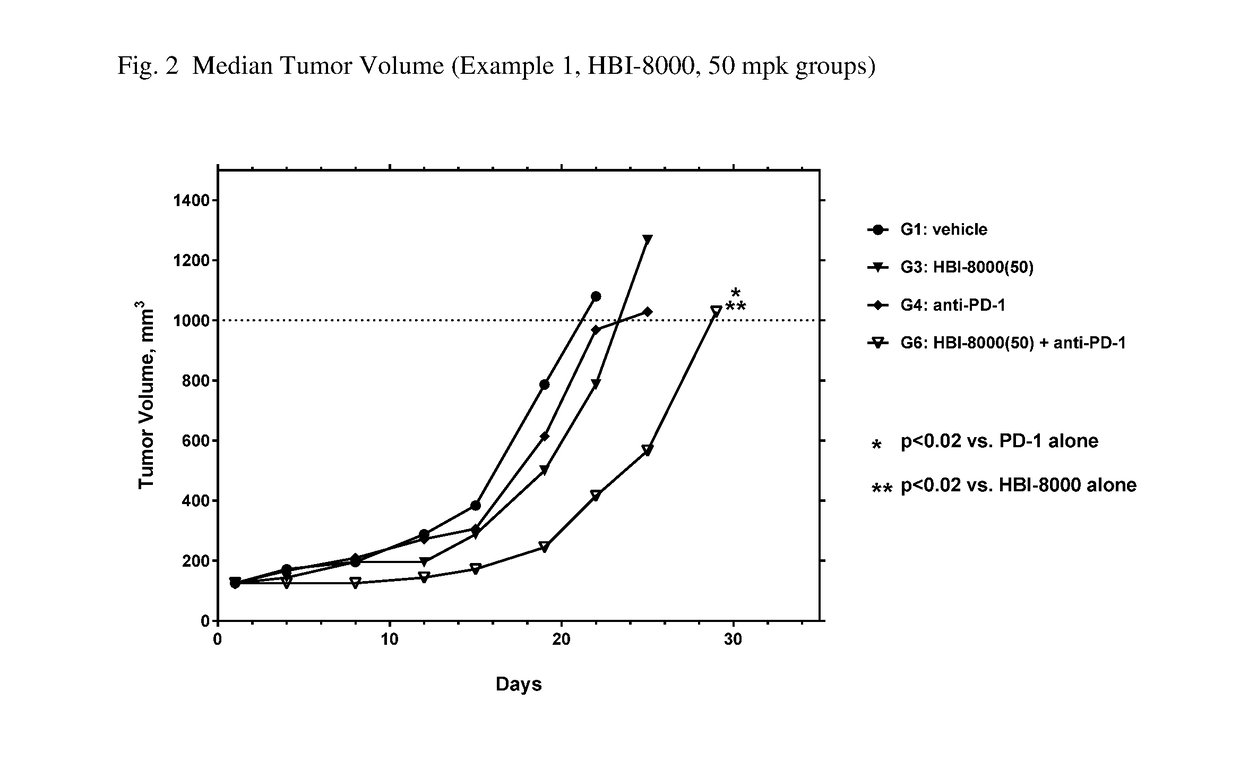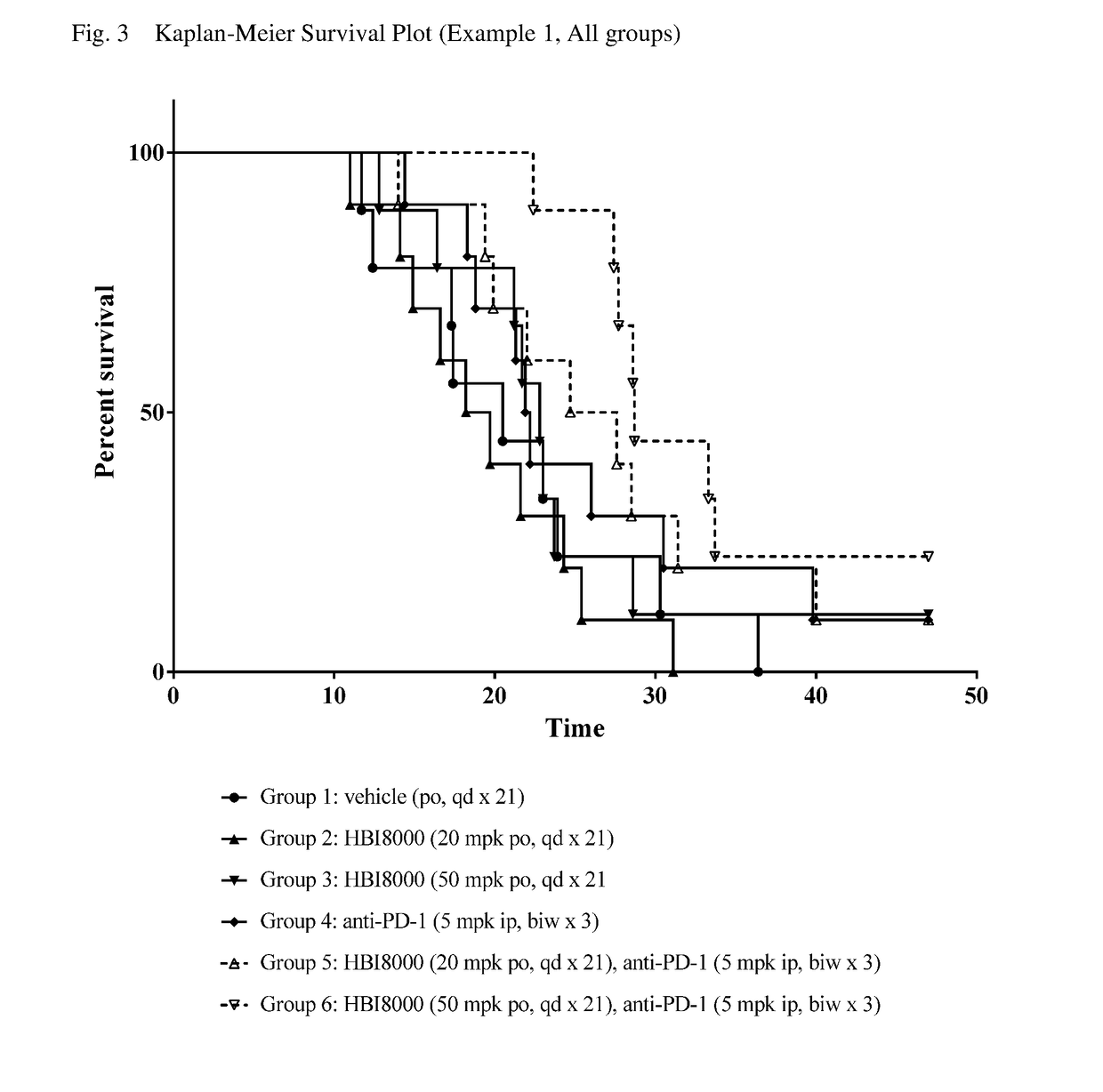Combination therapies of HDAC inhibitors and pd-1 inhibitors
a technology of hdac inhibitors and inhibitors, which is applied in the field of conjugation therapies of hdac inhibitors and pd-1 inhibitors, can solve the problems of significant morbidity and mortality worldwide, current standards of care fail to meet the need for effective therapies to improve cancer treatment, and significant number of tumors are either resistant or refractory, so as to prolong the disease-or-tumor free survival time, reduce the metastasis of a primary tumor
- Summary
- Abstract
- Description
- Claims
- Application Information
AI Technical Summary
Benefits of technology
Problems solved by technology
Method used
Image
Examples
example 1
[0260]In the present example, HBI-8000 was tested as monotherapy and in combination with anti-PD-1 at 5 mg / kg. The experiment included a vehicle-treated group, and a PD-1 inhibitor antibody monotherapy group, which served as the control groups for analysis of efficacy. Tumors were measured twice per week until the study was ended on Day 47. Each animal was euthanized when its tumor attained the endpoint tumor volume of 1000 mm3 or on the final day of the study, whichever came first, and the time to endpoint (TTE) for each mouse was calculated. Treatment response was determined from an analysis of percent tumor growth delay (% TGD), defined as the percent increase in the median time to endpoint (TTE) for treated versus control mice; and by log rank significance of differences in survival among groups and regression responses.
[0261]Mice: Female C57BL / 6 mice (Charles River Laboratories) were eight weeks old, with a body weight (BW) range of 15.4 to 22.0 grams on Day 1 of the study. The...
example 2
[0272]In the present example, HBI-8000 was tested as monotherapy and in combination with PD-1 inhibitor antibody at 5 mg / kg. The experiment included a vehicle-treated group and an PD-1 inhibitor antibody monotherapy group, which served as the control groups for analysis of efficacy. Tumors were measured twice per week until the study was ended on Day 50. Each animal was euthanized when its tumor attained the endpoint tumor volume of 1000 mm3 or on the final day of the study, whichever came first, and the time to endpoint (TTE) for each mouse was calculated. Treatment response was determined from an analysis of percent tumor growth delay (% TGD), defined as the percent increase in the median time to endpoint (TTE) for treated versus control mice; and by log rank significance of differences in survival among groups and regression responses.
[0273]Mice: Details of the animals used in this example can be found in paragraph [00216].
[0274]Tumor Cell Culture: Details of the tumor cells used...
example 3
[0284]In this model, a proportion of the animals treated 1st line with the PD-L1 checkpoint inhibitor antibody experience complete tumor regression. However, a similar proportion of animals treated 1st line with the PD-L1 inhibitor antibody experience rapid tumor progression. The balance of the animals treated in this way experience slow tumor progression or stable disease, which is a result which approximates the situation in a number of human cancer patients receiving PD-L1 inhibitor antibody therapy, i.e., they experience a transient partial response, including stable disease, but then develop resistance and rapidly progress, failing PD-1 inhibitor antibody therapy. In this example, the efficacy of HBI-8000 as a second-line therapy, alone and in combination with PD-1 inhibitor antibody RMPI-14, was evaluated for the ability to cause tumor growth delay (TGD) in animals which tumors which are progressing following PD-L1 inhibitor antibody first line therapy in the MC38 murine colon...
PUM
| Property | Measurement | Unit |
|---|---|---|
| molecule weight | aaaaa | aaaaa |
| volume | aaaaa | aaaaa |
| body weight | aaaaa | aaaaa |
Abstract
Description
Claims
Application Information
 Login to View More
Login to View More - R&D
- Intellectual Property
- Life Sciences
- Materials
- Tech Scout
- Unparalleled Data Quality
- Higher Quality Content
- 60% Fewer Hallucinations
Browse by: Latest US Patents, China's latest patents, Technical Efficacy Thesaurus, Application Domain, Technology Topic, Popular Technical Reports.
© 2025 PatSnap. All rights reserved.Legal|Privacy policy|Modern Slavery Act Transparency Statement|Sitemap|About US| Contact US: help@patsnap.com



